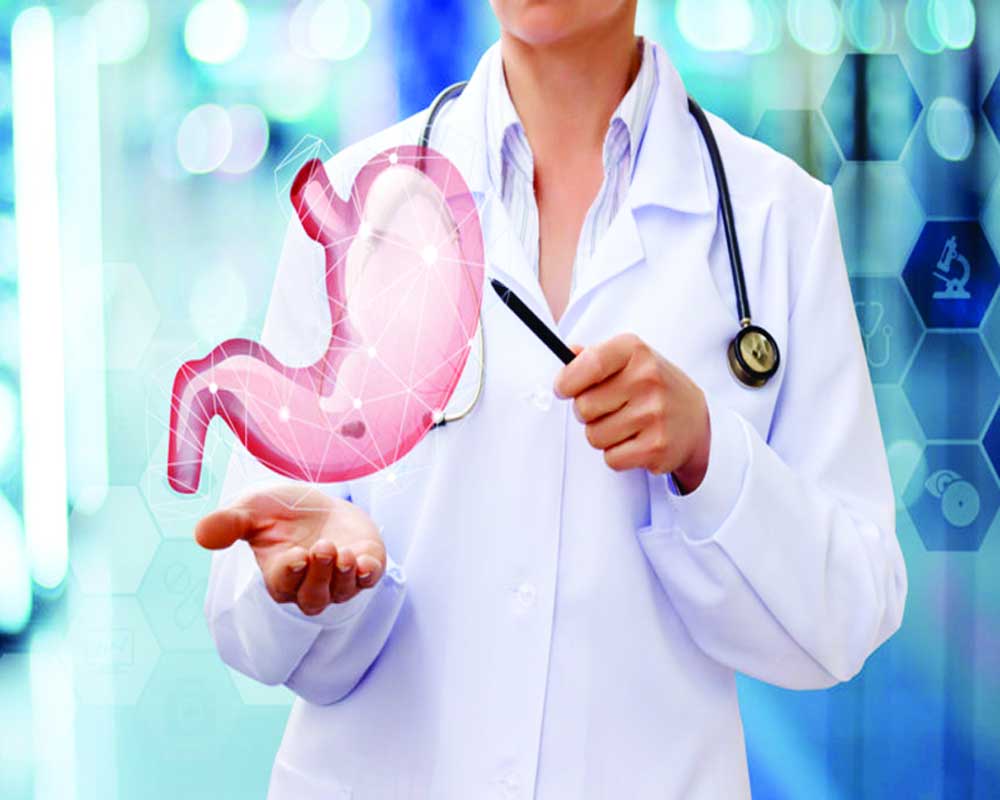Food poisoning and stomach flu are common ailments. However, most people get confused between the two. Dr SK Mundhra tells you how to tackle both
Food poisoning and stomach flu are often confused due to their similar symptoms. Food poisoning is caused by eating food that contains bacteria, viruses, or parasites, which can get into food at various points during production. While stomach flu is caused by a viral infection that attacks the digestive system and is highly contagious and spreads rapidly.
A stomach flu has a few common symptoms that can last for up to 10 days. They include:
- Diarrhea that may be watery or bloody
- Loss of appetite
- Nausea or vomiting
- Stomach cramps, muscle aches, or weakness
- Low-grade fever
- Headaches
- Light-headedness or dizziness
There are a few things that people can do at home while recovering from a stomach virus:
- People with a stomach virus should avoid food for a while to let their stomach settle.
- Let the stomach settle: Try not to eat any solid foods for several hours.
- Take small sips of water: People should drink plenty of liquids to not get dehydrated.
- Avoid juice or other beverages which can make diarrhea worse.
- Ease back into eating: Start with bland easy-to-digest food such as soda crackers, toast,and rice. Stop eating if nausea returns.
- Avoid certain substances: These include dairy, caffeine, alcohol, sugar, and fatty or highly seasoned foods.
- People should be cautious of over-the-counter medications as some can make the infection worse. Even anti-diarrhea medications can make the situation worse if the cause of the infection is certain bacteria. The stomach flu typically goes away within 24 to 28 hours, but home care is vital for a speedy recovery. See a doctor if you have any of the following symptoms:
- Bloody stool or vomit
- Unable to keep liquid down for at least 24 hours
- Dehydration
- Fever above 104°F.
Better safe than sorry
Some foods are more likely to cause of food poisoning because of the way they’re produced and prepared. Meat, poultry, eggs, and shellfish may harbor infectious agents that are killed during cooking. If these foods are eaten in their raw form, not cooked properly, or if hands and surfaces are not cleaned after contact, food poisoning can occur.
Always wash your hands before cooking or eating food. Make sure that your food is properly sealed and stored. Thoroughly cook meat and eggs. Anything that comes in contact with raw products should be sanitised before using it to prepare other foods. Make sure to always wash fruits and vegetables before serving.
The following may be the reasons to cause food poisoning and infections.
- Dirty utensils, hands and kitchen area: If the utensils and the kitchen area is dirty, the food you prepare is prone to infections and cause food poisoning. Wash your hands properly to avoid the spread of bacteria and contaminating the food.
- Keeping raw material and ready-to-eat food together: Ready to eat food are not cooked and if kept along with raw meat, it is vulnerable to pick up germs even after cooking process.
- Keeping cut fruits and vegetables outside: Warm place is a breeding ground for bacterias. Cut fruits or vegetables need to be kept in refrigerator immediately.
- If the leftovers are not cooled: Nobody wants to waste the delicious food prepared. Cooling leftovers within 90 minutes of being prepared, then making sure they go straight in the fridge is the best way to ensure that your delicious leftovers will still be good for the next few days.
- Reheating meat more than once: If you’ve got something meaty in your leftovers, ensure that you don’t heat it up more than once. Continuously heating and then cooling meat allows bacteria to grow and multiply, potentially causing food poisoning. If you’ve got a lot of leftovers, the best thing to do is to only heat up the portion you’re planning to eat, rather than the entire dish.
The symptoms of food poisoning occur more quickly than those of a stomach virus.
Cross-contamination is often the cause of food poisoning. This is when harmful organisms transfer from one surface to another. Raw foods and ready-to-eat foods like salads are particularly at risk of contamination.
Bacteria can also grow rapidly when foods such as meats, dairy products, and sauces are not kept at the right temperature. The bacteria and other harmful organisms can produce poisonous substances that cause inflammation of the intestines when eaten.
Symptoms can vary depending on the source of the infection. Common cases of food poisoning will typically include at least three of the following symptoms — abdominal cramps, diarrhoea, vomiting, loss of appetite, mild fever, weakness,nausea and headaches.
The best way to prevent food poisoning is to handle your food safely and to avoid any food that may be unsafe.
The writer is HOD, Internal Medicine, Saroj Super Speciality Hospital, New Delhi


























